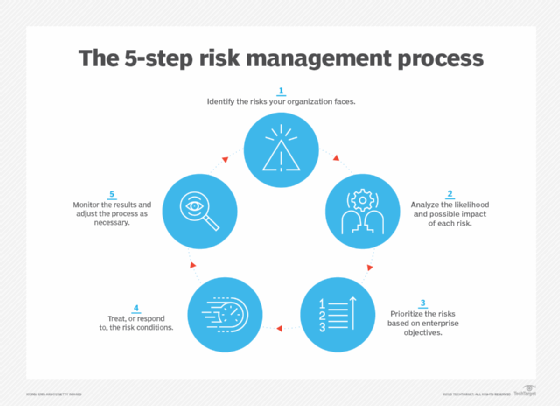Exploring the Relevance of Risk Management for Effective Decision-Making Methods
In the elaborate globe of company, Risk Management arises as a critical factor in the decision-making process. The capability to identify possible dangers and chances, and strategize accordingly, can lead to the difference between success and failure.
Understanding the Concept of Risk Management
Risk Management, a vital element in decision-making, is commonly misinterpreted or oversimplified. Risk Management entails organized and disciplined approaches, using information and insightful evaluations. From financial unpredictabilities, lawful responsibilities, tactical Management mistakes, to crashes and natural disasters, it addresses numerous dangers - importance of risk management.
The Duty of Risk Management in Decision-Making Processes
In the world of calculated planning and organization procedures, Risk Management plays an important function in decision-making procedures. Risk Management therefore comes to be a vital tool in decision-making, assisting leaders to make informed selections based on a thorough understanding of the dangers included. Risk Management serves as a crucial part in the decision-making procedures of any type of company.

Exactly How Risk Management Boosts Strategic Planning
In the context of calculated preparation, Risk Management plays a pivotal function. Launching with the identification of possible dangers, it even more reaches the application of Risk mitigation measures. The function of Risk Management is dynamic however not fixed, as it requires constant tracking and adjusting of techniques.
Identifying Potential Dangers

Implementing Risk Reduction
Risk reduction methods can vary from Risk avoidance, Risk transfer, to take the chance of reduction. Each approach ought to be customized to the particular Risk, considering its possible impact and the company's Risk tolerance. Efficient Risk reduction requires a deep understanding of the Risk landscape and the potential influence of each Risk.
Tracking and Readjusting Techniques
Though Risk reduction is a vital step in tactical planning, continual tracking and modification of these strategies is click for more info similarly essential. This continuous process allows organizations to identify new risks and reassess existing ones, making sure the carried out approaches continue to be efficient in the ever-changing business atmosphere. It likewise provides a chance to review the success of the Risk Management steps, permitting changes to be made where needed, additional enhancing strategic planning. Efficient monitoring and modification require making use of analytics and essential efficiency indications (KPIs) to measure effectiveness. These devices offer beneficial data-driven insights that can inform tactical decision-making. As a result, surveillance and changing Risk Management approaches is a critical element for enhancing an organization's strength and strategic planning.
Situation Researches: Successful Risk Management and Decision-Making
In the globe of business and finance, effective Risk Management and decision-making commonly offer as the pillars of flourishing ventures. These cases highlight the worth of astute Risk Management in decision-making procedures. These situations highlight the critical duty of Risk Management in critical decision-making.
Devices and Techniques for Effective Risk Management
Navigating the detailed puzzle of Risk Management needs the ideal collection of devices and strategies. These tools, such as Risk signs up and read here heat maps, aid in determining and assessing potential dangers. Strategies consist of both measurable methods, like sensitivity evaluation, and qualitative methods, such as SWOT evaluation. These aid in prioritizing threats based on their potential effect and chance. Risk reaction techniques, a crucial part of Risk Management, entail approving, avoiding, transferring, or mitigating dangers. Monitoring and regulating risks, through normal audits and reviews, make visit here certain that the approaches stay effective. With these strategies and tools, decision-makers can navigate the complex landscape of Risk Management, thus helping with educated and effective decision-making.
Future Trends in Risk Management and Decision-Making Techniques
As we explore the vast landscape of Risk Management, it becomes noticeable that the devices and methods utilized today will certainly remain to develop. Future patterns point towards an increased dependence on innovation, with artificial knowledge and artificial intelligence playing significant functions. These technologies will certainly allow organizations to forecast prospective threats with higher precision and make more informed choices. Additionally, there will certainly be a growing focus on durability, not just in taking care of dangers but additionally in recovering from damaging scenarios. Finally, the concept of Risk society, where every participant of an organization understands and associated with Risk Management, will gain more prestige. These patterns declare an even more inclusive and aggressive method in the direction of Risk Management and decision-making.
Verdict

Risk Management therefore becomes a vital device in decision-making, assisting leaders to make informed choices based on a comprehensive understanding of the threats included. Risk reduction strategies can vary from Risk avoidance, Risk transfer, to risk decrease (importance of risk management). Effective Risk reduction requires a deep understanding of the Risk landscape and the potential influence of each Risk. Risk reaction techniques, a key element of Risk Management, entail accepting, staying clear of, transferring, or mitigating risks. The idea of Risk culture, where every member of a company is aware and entailed in Risk Management, will certainly acquire much more prestige
Comments on “Exploring the Long-Term Benefits and Importance of Risk Management for Startups”